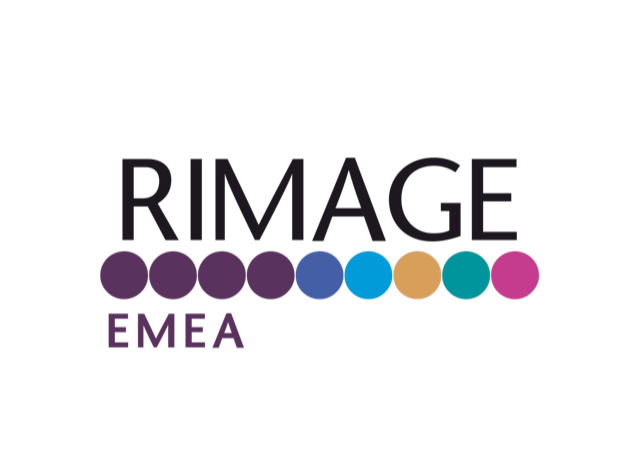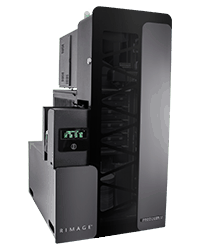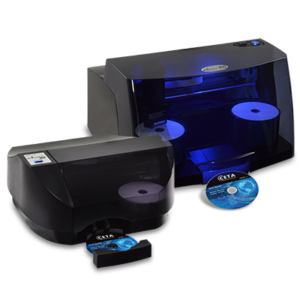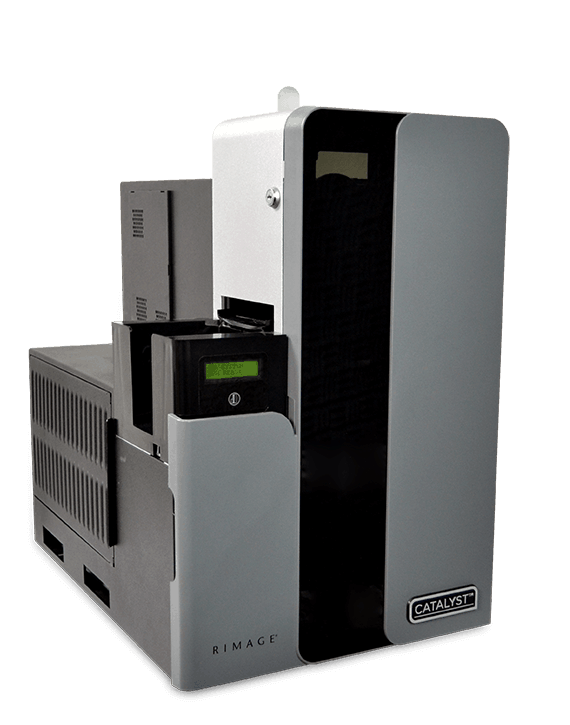History
2018
- Rimage celebrates 40 years of service.

2017
- In late 2017, Rimage released the next-generation Producer V disc publishing system and Everest Encore printer. Adding features introduced with the Catalyst series such as filtered positive airflow and front-removable hard drives, Producer V is designed for 24×7 high-volume production.
2016
- In late 2016, Rimage announced the new Allegro product family featuring high-quality color inkjet printing in a compact, desktop system.
- Rimage added production nodes in Frankfurt, Germany and Minneapolis, Minnesota, expanding its Rimage Fulfillment Services capacity to meet growing worldwide demand.
- Rimage announced the new Catalyst product family in 2016, further reinforcing its commitment to the digital publishing business with the high quality, medium-volume Catalyst 6000N and 6000 systems.
2015
- Rimage released RSS 9.0 in early 2015, with an updated look and feel to QuickDisc, support for BDXL Quad-layer, a new PDF printing engine, updates to Rimage System Manager and software suite installation, and more.
- In 2015, Rimage added a warehouse location in California, expanding service to partners and end users first for consumables and later in the year for selected systems.
- In late 2015, Rimage acquired technology from CustomCD, a digital duplication service bureau. New services are sold under the brand Rimage Fulfillment Services.

2014
- In 2014, Qumu Corporation agreed to sell its Rimage disc publishing assets to Equus Holdings. This enabled Rimage to maximize the value of the disc publishing operations, while freeing Qumu to focus on its video business. Rimage becomes part of the privately-held Equus Holdings portfolio, under the leadership of CEO Chris Heim.
2013
- Producer IV was launched in 2013, debuting new, contemporary styling and a more powerful embedded PC. This includes models 6200N, 7200N, and 8200N.
- In fall of 2013, Rimage changed its name to Qumu Corporation, reflecting a commitment to the enterprise video market. Rimage remained a product brand for the company’s industry-leading CD/DVD/Blu-ray Disc™ publishing equipment, which continued to generate cash to fuel overall company growth.
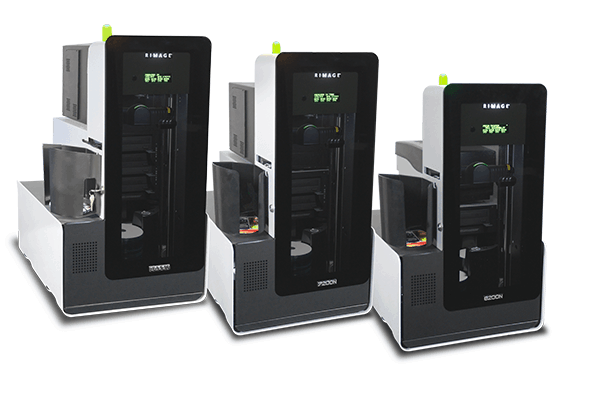
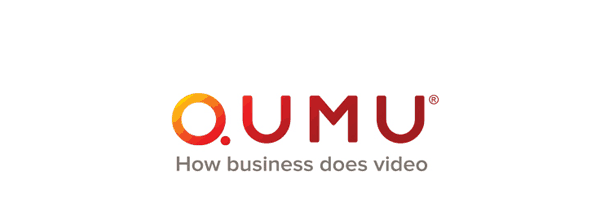
2012
- With the 2012 launch of models 3410N and 5410N, Rimage strengthened the quality of the Professional series. RSS updates to support 64-bit systems enabled Rimage to begin shipping Windows 7 Ultimate on embedded systems. The new Prism III printer was launched with hardware updates to enable Windows 7 support and offering improvements in ribbon handling.
- In 2012, Rimage Asia-Pacific expanded its MDS service into India with help from a local partner, to meet growing demand for medical systems.
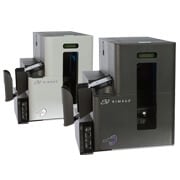
2011
- In 2011, Rimage released the new Everest® CMY II ribbon, with better color accuracy and performance on a wide range of thermal media.
- In late 2011, Rimage acquired Qumu, Inc., providing Rimage with a strong presence in the rapidly growing video communications market.
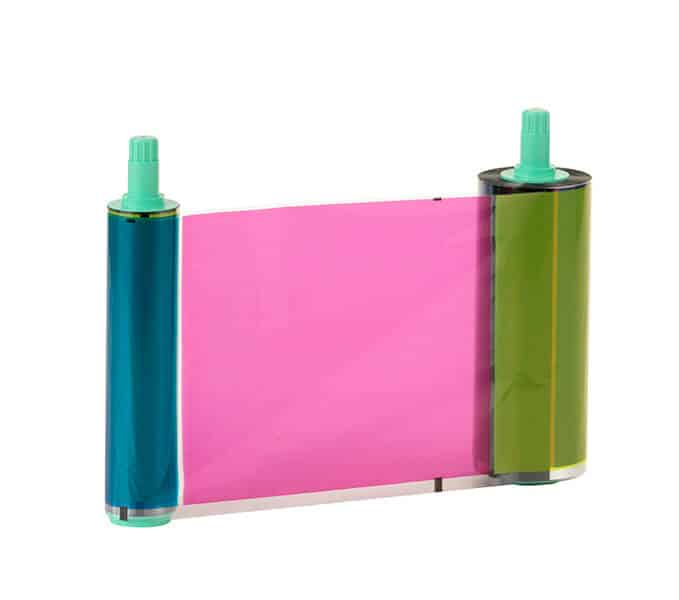
2010
- In early 2010, Rimage introduced two new models to its Professional Series. The Rimage 3400 and 5400N models established new market value points with innovative design, proven Everest print technology, and the ability to handle multiple media types and multiple users seamlessly over a network.
- Also in 2010, Rimage introduced Copy Station/Evidence Disc System (EDS) hardware, along with EDS Forensic and Surveillance software developed to meet the needs of law enforcement globally.
- In 2010, Rimage Information Technologies (Shanghai) Ltd. was established in China to serve MDS (Medical Disc System) demand in the Chinese medical market.
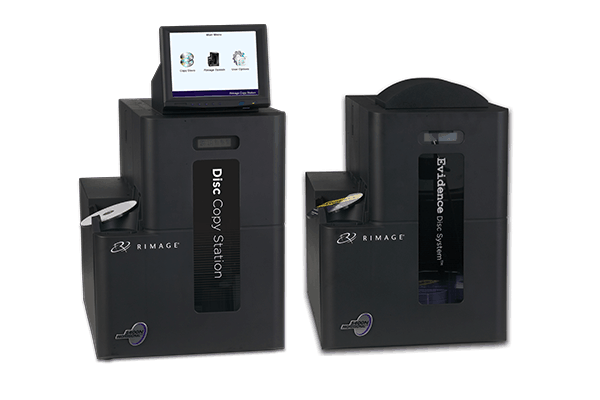
2009
- In 2009, Rimage introduced its strongest software suite yet, Producer Software Suite 8.2, which added ZIP folder encryption and the introduction of WebQD.
2008
- In 2008, Rimage revolutionized direct-to-disc thermal retransfer printing with the introduction of the Everest 600 thermal retransfer printer. The Everest 600 prints photo-realistic images with 600 dpi print resolution, which results in photo-realistic images, sharper text, smoother gradients and improved half-tones. With the superior quality of the Everest 600 printer, Rimage reset the industry standard for CD, DVD, and Blu-ray Disc printing.
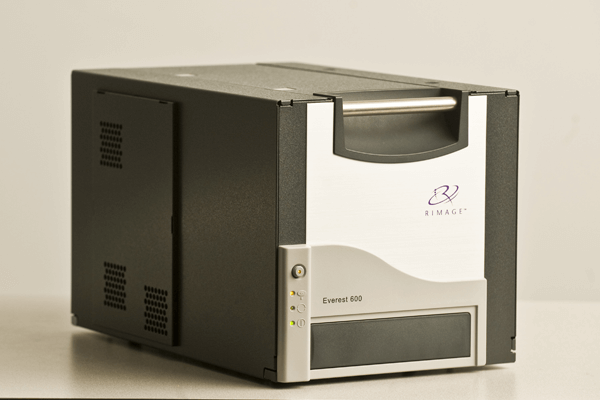
2007
- In 2007, Rimage replaced the DiscLab systems with the Professional™ series systems. The Professional series systems included Everest printing and choice of one or two recorders. Customers who purchased Professional series systems typically used them in an office environment where lower volumes of discs were required each day.
- Rimage continued to demonstrate its leadership position in the medical market, and by 2007, Rimage systems had been installed in over 5,000 medical facilities worldwide. With continued industry focus, Rimage released its new Medical Disc System to serve the medical and healthcare industry. Upon launch, Rimage Japan’s first MDS customer was a major medical OEM in Japan.
2006
- In 2006, Rimage launched the Producer III family, a broad, feature-rich product family designed to meet the publishing needs of high volume customers. Producer III systems had the option of using either Everest or Prism printers and came equipped with up to four recorders. Customers who purchased Producer III equipment required high throughput and uninterrupted operation.
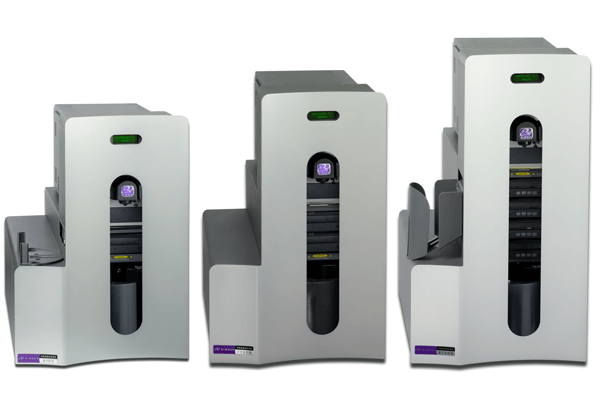
2005
- In 2005, Rimage Japan was created to serve the growing medical industry in Japan with optical disc publishing systems, imaging workflow software and image viewers as the health care industry in Japan transitioned from film to digital DICOM image distribution of patient records.
- Asia-Pacific growth continued in 2006 as business expanded into Taiwan and China.
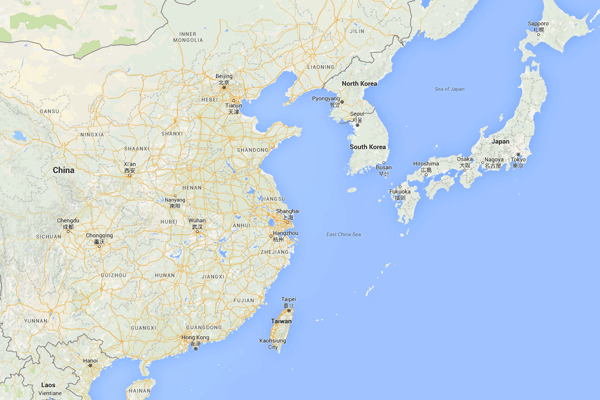
2004
- In 2004, Rimage introduced the DiscLab series of publishing systems. The DiscLab series was designed to meet the need for a small footprint machine that included Rimage’s state-of-the-art Everest II printer. In addition, some DiscLab systems were available with embedded or built-in PCs that arrive already installed, configured and ready to go to work. In addition, Rimage also introduced its latest Desktop products, the Rimage 2000i CD, DVD system and the stand-alone Rimage 480i ink jet printer. The Rimage 480i ink jet printer represented Rimage’s second joint development with HP in the disc printing business.
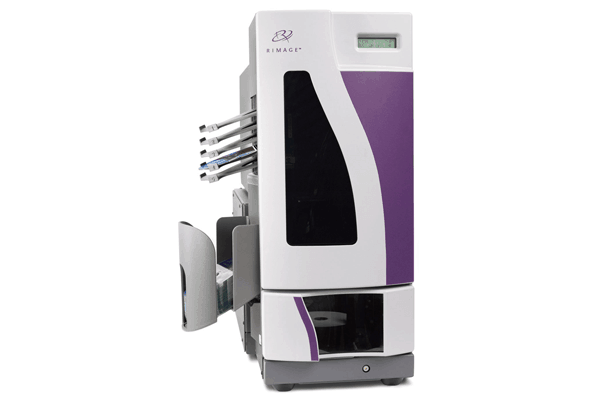
2003
- In 2003, Rimage was the first to offer DVD-R support and the first to offer total flexibility by combining DVD-R and CD-R production in a single automated system. Today, all Rimage systems are available with support for CD-R, DVD-R, and Blu-ray Disc™ recording formats.
- The year 2003 also saw the introduction of the first ink jet printer developed and manufactured by Rimage. A joint technology project between HP and Rimage, the Liberty Ink Jet Printer entered the market to rave reviews and fast growing sales. The Liberty printer was available both on Rimage Desktop systems and as a stand-alone model.
2001
- When disc printing requirements called for more photo-realistic, indelible, full color images, Rimage went to work developing the world’s first thermal re-transfer labeling process for CDs and DVDs. In 2001, Rimage introduced the Everest® printer, giving customers the ability to print stunning, indelible, photo quality artwork directly on the disc. Everest was promptly integrated into the Producer™ family of CD/DVD systems, giving users two premium options for printing.
- By 2001, Rimage systems were widely-used for medical imaging, and Rimage began its role as the industry leader – a position it has consistently maintained throughout the subsequent years.
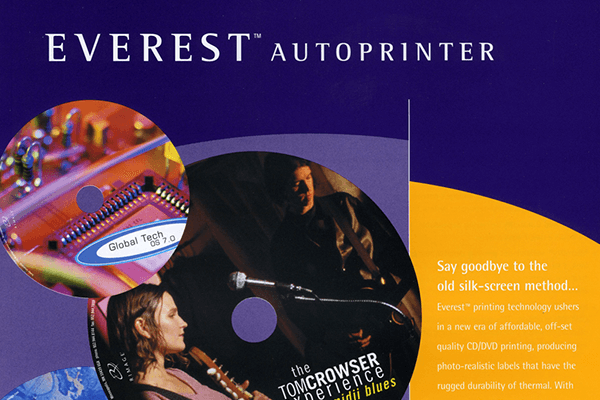
2000
- In 2000, Rimage acquired Cedar Technologies, a Minnesota-based corporation. Cedar had a product line of compact CD systems with ink jet printers that were popular in both the United States and Europe. The acquisition of Cedar paved the way for Rimage to enter the desktop marketplace and reach a new segment of customers. Shortly after the acquisition, in December of 2000, Rimage announced its own line of desktop systems after integrating Cedar’s technology with Rimage systems and software.
1998
- In 1998, Rimage grew its distribution network to include Korea, Singapore, Australia and New Zealand.
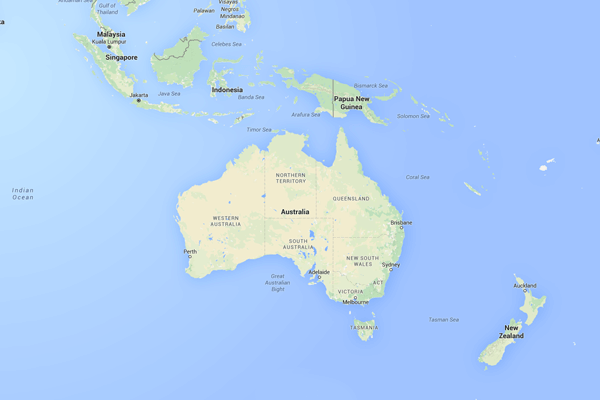
1997
- In 1997, Rimage introduced the Perfect Image Producer System, the first fully integrated automated CD-R publishing system that combined file transferring, recording, and thermal surface printing in one continuous uninterrupted flow.
- In 1997, Rimage made the transition from a direct sales company to establishing a two-tier distribution network in the United States. Also that year, Rimage closed its Singapore operation and began the process to develop local sales and distribution in key markets. Our first distributor was Marubeni Machinery in Tokyo Japan.
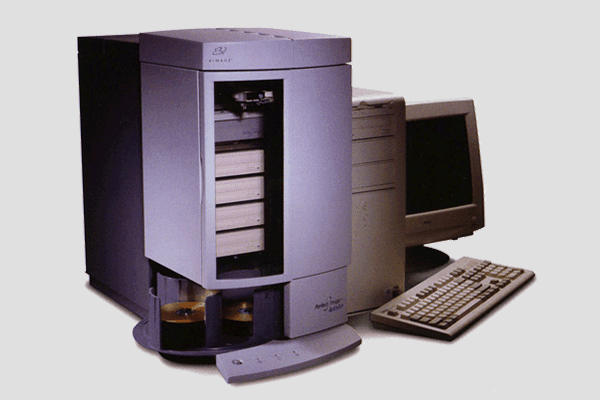
1995
- When data storage requirements grew beyond the capacity of floppy diskettes, Rimage entered the emerging CD-R market. CD-R (Compact Disc-Recordable) is a digital optical disc storage format. A CD-R disc is a compact disc that can be written once and read many times. Although floppy diskettes were automatically labeled with a paper stick-on label, this was not the case with automated CD-R production. To address this need, Rimage introduced Prism™, the world’s first “laser quality” direct-to-disc thermal printer in 1995. The Prism disc printer, now the Prism III, is still the production standard in some of the highest volume CD production locations in the world.
- In 1995, Rimage acquired Dunhill Software Services, a large service bureau serving a global customer base from multiple locations.
1994
- In 1994 Rimage continued to expand with acquisitions of DataPath and Duplication Technology, a dupe house offering diskette, tape, and other specialty duplication services.
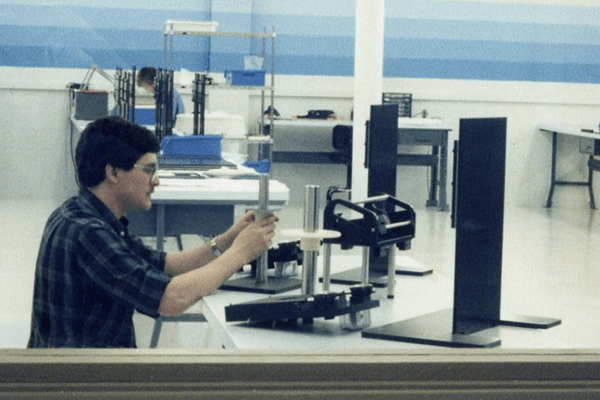
1993
- In 1993, Rimage acquired ALF Products. ALF had been making manual diskette duplication equipment, and was a supplier to Rimage and its competitors for the electronics board used to control the copy process. When ALF developed its next generation of the control board, Rimage elected to purchase the company and prevent new technology from getting in competitors’ hands.
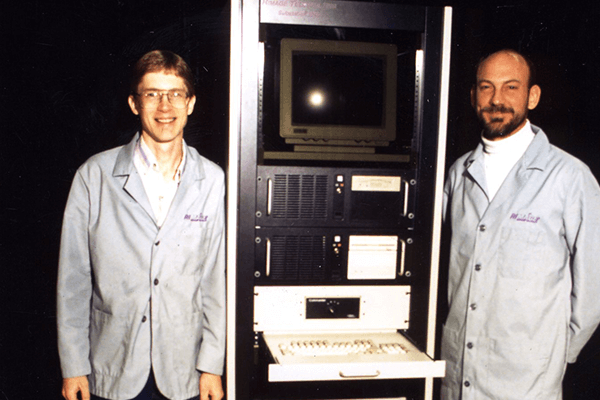
1992
- In 1992, Rimage established a wholly owned subsidiary in Germany, starting with one employee. Today the thriving Rimage Europe GmbH covers Europe, Scandinavia, Africa, the Middle East, and Russia.
- Following an IPO in 1992, Rimage was listed on the NASDAQ under the symbol RIMG.
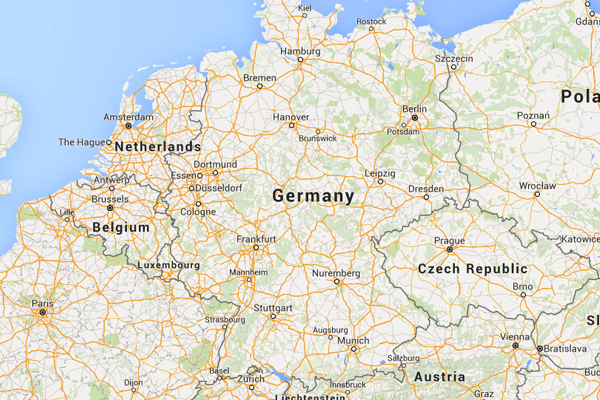
1990’s
- In the early 90’s Rimage continued to expand with acquisitions of DataPath and Duplication Technologies, a dupe house offering diskette, tape, and other specialty duplication services.
LATE 1980’S
- Rimage introduced the Perfect Image Diskette Publishing System in the 1980’s, which was the most powerful software manufacturing system to date.
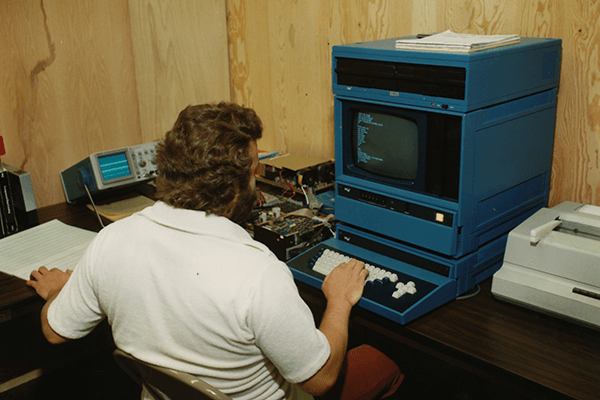
1988
- In 1988, IXI merged with MST – Media Systems Technology, a competitor in the floppy diskette technology business. Together they became Rimage, a name chosen in a company-wide contest from “replicated images.”
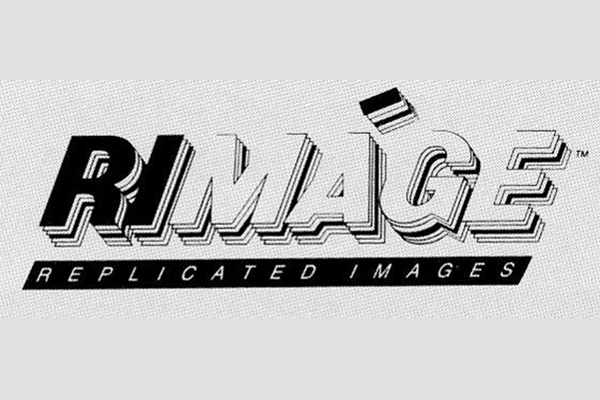
1980’s
- As IXI entered the 80’s its products grew to include the flex diskette audit station; custom and standard cables; diskette formatting, copying and sorting systems for high-volume duplication; magnetic tape degaussers; analytical and consulting services; PC board design, assembly, and testing; and assembly services serving the growing high-tech market. Of course, storage media had evolved too, moving from 8″ floppies to 5-1/4″ and then to 3-1/2″ diskettes.
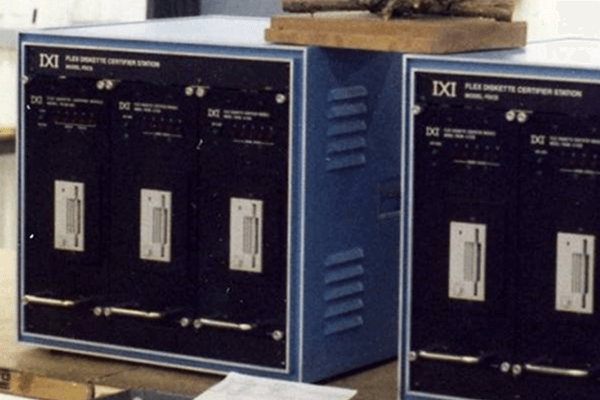
1978
- The earliest days of Rimage began in 1978 with the formation of IXI Laboratories. IXI developed floppy diskette certifiers, equipment that diskette manufacturers used to test every 8″ floppy diskette before sealing the flap on plastic sleeve. With only 80-90% of diskettes passing certification, IXI’s certifiers were in high demand.
Any Questions?
Our award winning team of experts can help answer them.
